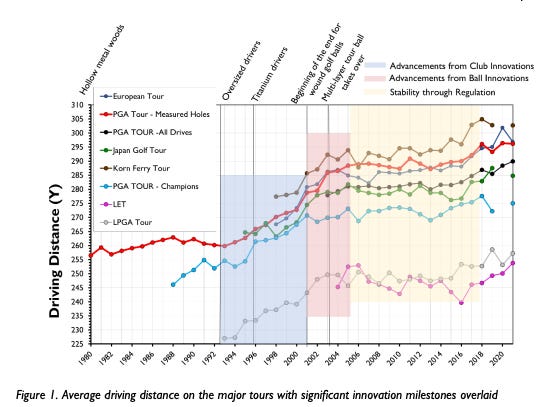March Madness and Changing the Rules
March Madness Calcutta
A day before the NCAA Tournament tipped off, a friend invited my brother and I to share an entry in a March Madness “Calcutta.” I don’t watch too much college basketball but I also don’t refuse opportunities like this, so I inquired about the format.
Here were the Rules:
Twelve participants draft 64 teams through a snake draft with a random draft order. So the person with the 1st overall pick also receives the 24th, 25th, 48th and 49th picks. We got stuck with the 12th pick, meaning we also had the 13th, 36th, and 37th picks.
In most Calcutta formats, teams are auctioned, so pricing is dynamic. However, pricing was fixed in this contest.
Prices:
1 Seeds: $150 each
2&3 Seeds: $125 each
4-6 Seeds: $100 each
7-9 Seeds: $75 each
10-12 Seeds: $50 each
13-16 Group: $40 Total
The 13-16 seeds were lumped together by region. So you could buy the 13-16 seeds from the South region for $40 total (i.e. $10 per team) with one draft pick. Every other team was purchased individually. To buy the 3 seed from the Midwest region, you spent $125.
Ok, last rule. How do you win money? The format was “Eat what you kill.” If your team beats a 1 seed, you win $150. If your team wins against a 10 or 12 seed, you win $50. Got it?
Now before you continue reading, consider how you would approach this problem. Conceptually, which seeds are most valuable? How would you find an edge?
We only had an hour to game plan before the draft, so we built a pretty simple model.
We projected an expected profit by team for the first two rounds of the tournament using a combination of Las Vegas prices and KenPom ratings. Simply put, we leveraged market prices to determine the win probabilities of each team for the first round since prices existed, and we made educated guesses at win probabilities for the second round since market prices didn’t exist yet.
Why did we only model two rounds? More uncertainty is introduced with each round. Good luck predicting which teams will be alive in the third round. We figured modeling two rounds gave us a good indication of the most valuable purchases.
So here’s how our tool identified the most valuable team, South Dakota State:
On a $10 investment, we expected a $50 profit on South Dakota State because according to Vegas, they had a 45% chance of beating a $100 team, plus we estimated a ~38% chance of beating their next opponent if they won their first game.
Note: Since we only projected two rounds, we undervalued the best teams in the tournament. These teams are most likely to continue winning after the second round. We didn’t really care because we intuited the top seeds were overpriced. For instance, a $150 team like Baylor would have to win at least three games to return a profit, which is no easy task in a single elimination tournament. Baylor lost in the second round.
Right before the draft, my brother reminded me, “This is just for fun. We don’t have to Billy Beane this.” Healthy perspective, but we proceeded with the game plan. Everyone ahead of us in the draft order took all the top seeds off the board. We definitely turned a couple heads when we selected “Midwest 13-16 seeds” with our first pick.
Ultimately, we drafted:
Midwest 13-16 seeds ($40)
IU ($50)
San Francisco ($50)
Texas ($100)
We spent $240 into a pot of $4,460 on a bunch of dark horses. If any of our teams won a couple games, we’d be in the green, which is a sound investment strategy for March Madness. The NCAA Tournament is notoriously high variance, so we decided to use the variance to our advantage.
Every single one of our teams lost in the first round except for Texas.
I’m writing about this because it’s a fun example of leveraging data to give yourself the best chance of winning. Results don’t always follow, but we evaluate decisions based on the process, not the result.
When we scrutinize the outcome, we have a mechanism for evaluating the decisions we made. Were our numbers wrong? Should we have projected out more rounds? Reasonable questions to consider before next year! But we didn’t take blind guesses. We had a process.
It’s fine; I once lost a large Super Bowl bet on if there would be a touchdown or a “Dilly, Dilly” commercial first. That bet is much harder to evaluate.
Changing the Rules - Driving Distance
In past editions of Finding the Edge, we’ve discussed the impact of rules changes. When a significant rule changes in any sport, it’s worthy of attention. And it sounds like equipment changes are on the horizon in golf.
Last Wednesday, the USGA and the R&A announced “updated areas of interest on hitting distance in golf.” While nothing has been formally proposed, the governing bodies appear focused on reducing driver heads’ forgiveness so that finding the center of the club face is rewarded more than it is today. Remember when Bryson complained at the Open that his mishit drives weren’t flying as straight as desired? Well mishit drives are not supposed to fly straight. The USGA and R&A agree.
They also released the 2021 Annual Driving Distance Report, which I’d recommend reading.
Check out one of the visuals included within the report:
Look at the impact of technological advancements on driving distance. Between 1996 and 2006, average driving distance increased ~25 yards on the PGA Tour. Not pictured: increases to distance due to improvements in players’ physical fitness over that time period. Nonetheless, players are much more athletic than they were 10 years ago, yet driving distance increases have tapered off over the past decade. Equipment regulation is impactful.
This is something for golf fans to watch over the next few years. Players who struggle to find the center of the club face will struggle once stricter guidelines around driver technology are implemented. This may have a significant impact on performance.
Respect to the USGA and R&A for committing to the betterment of the game despite public ridicule from prominent figures like Phil Mickelson. As my favorite professor used to say, “Leaders focus on impact, not approval.”
I already thought highly of USGA CEO Mike Whan. And that was before I realized he has impressive data visualization skills!
Dell Match Play
The PGA Tour heads to the greatest city in the United States this week. I’ll be on the grounds, so if there’s any information from the course worth sharing, I’ll tweet it.
I’m not sure how to solve the Dell Match Play, but it has one of the most anticlimactic Sundays on Tour. Only two golfers contend for the trophy on Sunday afternoon. Sunday is slow, which is less than ideal from an entertainment product perspective.
How would you fix it? I’ll take submissions by email, and winner gets featured in a future Finding the Edge. I’ll also give the winner 10 FedEx Cup points and three PIP points.
Personally, I’d like to see some golfers stick around for either a skills challenge or some sort of skins game on Sunday. Stir up some entertainment on an otherwise slow day of competition. But I am not sure that’s the right solution. Let’s crowd source it!
Contact/Feedback
Email: Joseph.LaMagnaGolf@gmail.com
Twitter: @JosephLaMagna
Other Recent Content
I was very high on Kansas to win the NCAA Tournament but this changes everything:
Transgender swimmer Lia Thomas won the NCAA Championship in the 500-yard free style. We talked about this a few weeks ago. Free documentary title for whoever wants it: Backstrokes and Backlash

A UFC fighter stopped a mass shooting in Houston last week by rushing the shooter and submitting him via a rear naked choke. I scored the round 10-8. In all seriousness, Kevin Holland is a hero:


Longtime NFL reporter John Clayton passed away last week. Rest in peace to a terrific reporter and star of one of the best SportsCenter commercials of all time:






